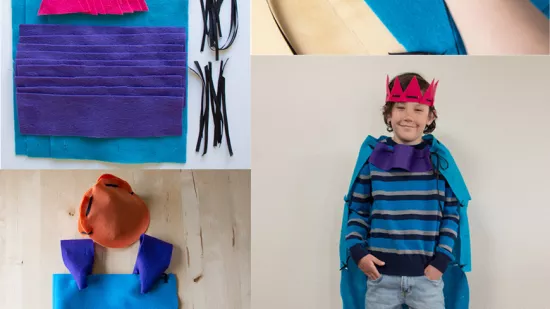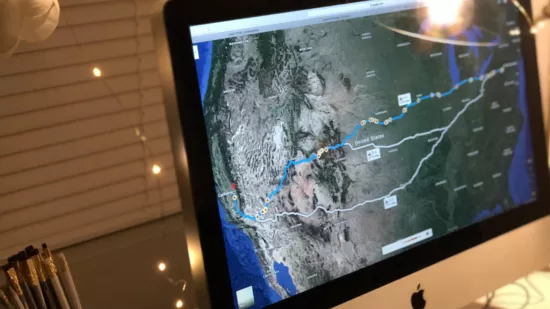UNIVERSITY PARK, Pa. — Penn State’s first online design degree program has been honored with an award from the Mid-Atlantic Region of UPCEA, a leading higher education association.
The Bachelor of Design in Digital Multimedia Design was named the winner of the 2020 UPCEA Mid-Atlantic Region Outstanding Program Award. UPCEA is a national organization that focuses on professional, continuing, and online education.
The degree program, which opened in 2017, is administered by the Penn State College of Arts and Architecture and offered online through Penn State World Campus. Faculty from the College of Arts and Architecture, the Donald P. Bellisario College of Communications, and the College of Information Science and Technology teach the courses in the interdisciplinary degree program.
Faculty from the partner colleges accepted the award during the virtual UPCEA Mid-Atlantic Region Conference on October 7. The program will be eligible for the national UPCEA outstanding program award, which will be named in the spring of 2021.
The criteria for the award included the program’s originality, innovation, and cost-effectiveness.
Gary Chinn, the assistant dean for digital learning at the College of Arts and Architecture, said the University is proud to receive the regional UPCEA award. He said the degree program’s strength is how it gives students opportunities to learn from three academic disciplines — the arts, communications, and information technology.
“We believe there is a need for multi-domain design thinkers and makers, people who are able to meet the challenges of today's complex world,” Chinn said. “The program's unique three-college structure allows Penn State to align our program with the cross-disciplinary nature of today’s workplace. The result is a program that aspires to educate design leaders who will take with them a broad and multifaceted array of design approaches based on foundations from arts, communications, and IT.”
When it opened, the degree was Penn State’s first online bachelor’s degree program that focused on design. Its curriculum covers user experience, product and service design, code-based art, 2D and 3D animation, art for video games, and real-time interactivity.
There are currently more than 170 students enrolled in the program, and in December 2019, its first group of students graduated. Students also formed the Digital Multimedia Design club, which hosts speakers and gives students a chance to engage and critique one another’s works.
Michael Collins, the curriculum coordinator for the program, said students have a wide variety of creative interests. For instance, he said, some students are focusing their work on augmented and virtual reality and animation. Others are pursuing their interests in illustration, product design, and art installations.
Students have produced a variety of projects, such as user-experience research for gaming software, animations, art installation proposals, story-driven web design and 3D games, and concept art. They also published web comics, children’s book illustrations, and product and service branding for underrepresented groups, and others, he said.
“It’s great to see such a wide variety of creative interests from our students,” Collins said. “Meeting our students’ unique and wide-ranging academic and career goals is quite a challenge for our faculty, but this has helped us to ensure that we are always pushing the program to be more inclusive.
Anna Divinsky teaches Art 10: Introduction to Visual Studies. In her course, students learn studio arts techniques through online videos that they apply to their artwork and use to explore their own creativity. Course work includes conducting research, writing narratives, and creating their own works, such as mail art, an environmental installation, a black-and-white portraiture photography collage, and more.
“It's interesting and rewarding to see them progress and succeed in the program, witnessing how much they have grown,” said Divinsky, who is also the online coordinator for the College of Arts and Architecture’s School of Visual Arts. “We are fortunate to have talented, passionate, and dedicated faculty who are committed to working closely with our students to ensure that they have a productive and positive learning experience.”
Another instructor, Courtney Redding, teaches Digital Multimedia Design 100, the foundations course and one of the core requirements for the major. She said students learn about the concepts, skills, and process of the design and art field.
Their first assignment is to explore the concept of rituals — routine activities such as eating or celebrating — and design a mobile app with that in mind to create that experience for the user. By the end of the course, they should have a sense of the overall design process.
“I personally love seeing the students engage with the material and interact with each other throughout the term,” Redding said. “Their writings and reflections are so thoughtful and thorough, and when they delve into their projects, I love to see how they take their ideas from scratch to prototype.”
Digital multimedia design major Samantha Albrecht said she is grateful to learn about different kinds of media. She said she’s taken courses in animation, writing for media, 2D and 3D art, photography, and drawing.
“I've been exposed to niches in the design industry I never expected to experience and created projects that could actually be developed into a real business,” said Albrecht, who works as the talent branding manager for a private equity real estate firm. “My classes have allowed me to apply what I learn to my career and give me the confidence to pursue promotions and leadership opportunities."
She commended her instructors, who she described as hands-on teachers invested in her success.
“The natural creativity I've always felt I had is being cultivated by instructors who want to see me succeed,” she said. “I know that this degree will provide me with the tools, skills, experience, and confidence to pursue a master's and further my career.”
Amber Barnes, another digital multimedia design student, has taken courses including photography, digital arts, communications, HTML, and software since she enrolled in the spring of 2020. She said she falls in love with each subject she takes, and her instructors have done a wonderful job of teaching techniques of design and showing students the creative process.
“They teach you how to think on a whim, how to think outside the box, how to push your creative limits, all at the same time that you’re enjoying what you are learning because this is what you are working toward as a career,” Barnes said. “When you love what you're doing, you know you're putting out great work.”
Her favorite so far has been Digital Multimedia Design 300, the major’s studio course. She said it helps her see her future.
“I love coming up with concept ideas and seeing how far you can take them,” said Barnes. “This is what I want to do with my life after graduating. I want to create new and today concepts, help design them, and put them in the users’ hands.”
Digital Multimedia Design projects
Students in the digital multimedia design program shared some of the art and design projects they have created.











